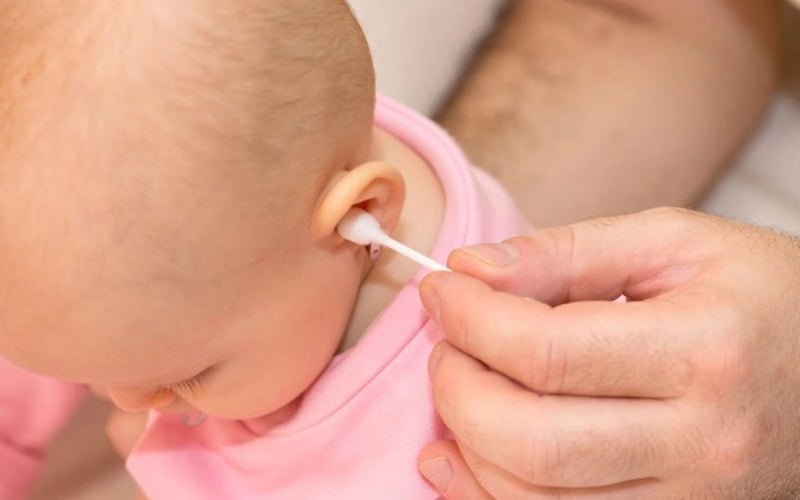
How to Clean Baby Ears Safely: A Complete Guide for Parents
Share
When it comes to baby care, even the smallest tasks can feel overwhelming. One common concern for new parents is how to clean their baby’s ears safely. Babies are delicate, and their ear health requires special attention. Using the wrong method can cause discomfort—or even harm.
This guide will walk you through everything you need to know about cleaning your little one’s ears, from what to avoid to safe step-by-step methods.
🧐 Do You Really Need to Clean Inside a Baby’s Ears?
Here’s the good news: you don’t need to clean deep inside your baby’s ears. The ear canal naturally pushes out earwax on its own. Earwax (also called cerumen) actually protects your baby’s ears by trapping dust, dirt, and bacteria.
What parents need to do is simply keep the outside of the ear clean, not dig inside.
❌ What NOT to Do When Cleaning Baby Ears
-
Do not use cotton swabs (Q-tips): Inserting them into your baby’s ears can push wax deeper, block the ear canal, or even damage the eardrum.
-
Do not use sharp objects: Hairpins, fingernails, or any pointed item are dangerous and should never go near your baby’s ears.
-
Avoid liquid drops without a doctor’s advice: Over-the-counter ear drops may not be suitable for newborns and should only be used if recommended by a pediatrician.
✅ Safe Ways to Clean Baby Ears
Here’s how you can safely clean your baby’s ears at home:
1. Clean the Outer Ear with a Soft Cloth
-
Use a soft, damp washcloth or cotton ball.
-
Gently wipe the outer ear and behind the ear during bath time.
-
Dry thoroughly to prevent moisture buildup.
2. Remove Visible Wax at the Opening
-
If you notice wax at the entrance of the ear canal, gently wipe it away with a cloth.
-
Never try to dig it out.
3. Keep the Area Behind the Ears Clean
Babies often develop a buildup of sweat, milk, or dirt behind the ears.
-
Clean this area daily with a damp cloth.
-
Dry well to prevent irritation or infection.
🍼 When to See a Doctor About Earwax
Most of the time, earwax is harmless. But in some cases, you should contact your pediatrician:
-
If you see excessive earwax that seems to block the ear canal.
-
If your baby is pulling at their ears frequently, which could be a sign of irritation or infection.
-
If you notice discharge, foul smell, swelling, or redness.
-
If your baby seems to have hearing difficulties.
A doctor can safely remove excess earwax if needed.
💡 Tips for Healthy Baby Ears
-
Dry ears gently after baths.
-
Keep loud noises away—babies’ ears are very sensitive.
-
Never insert objects into the ear canal.
-
Regularly check behind the ears for cleanliness.
🌟 Key Takeaway
Cleaning your baby’s ears doesn’t mean digging inside. The safest approach is simple: wipe the outside, leave the inside alone, and consult your pediatrician if you notice problems. Earwax is natural and protective, so less is more when it comes to ear care.
By following these gentle methods, you’ll keep your baby comfortable, safe, and healthy. 💕




